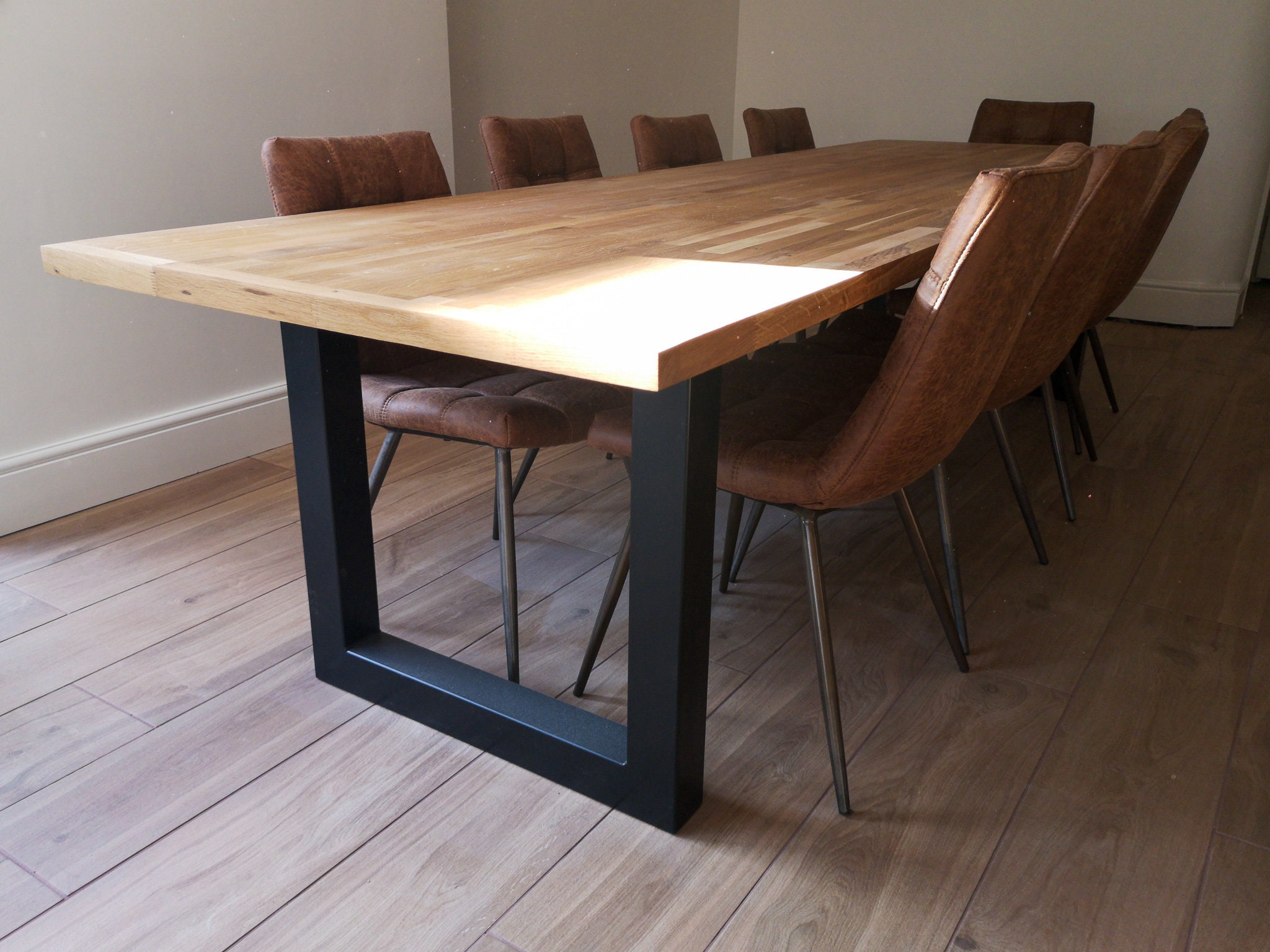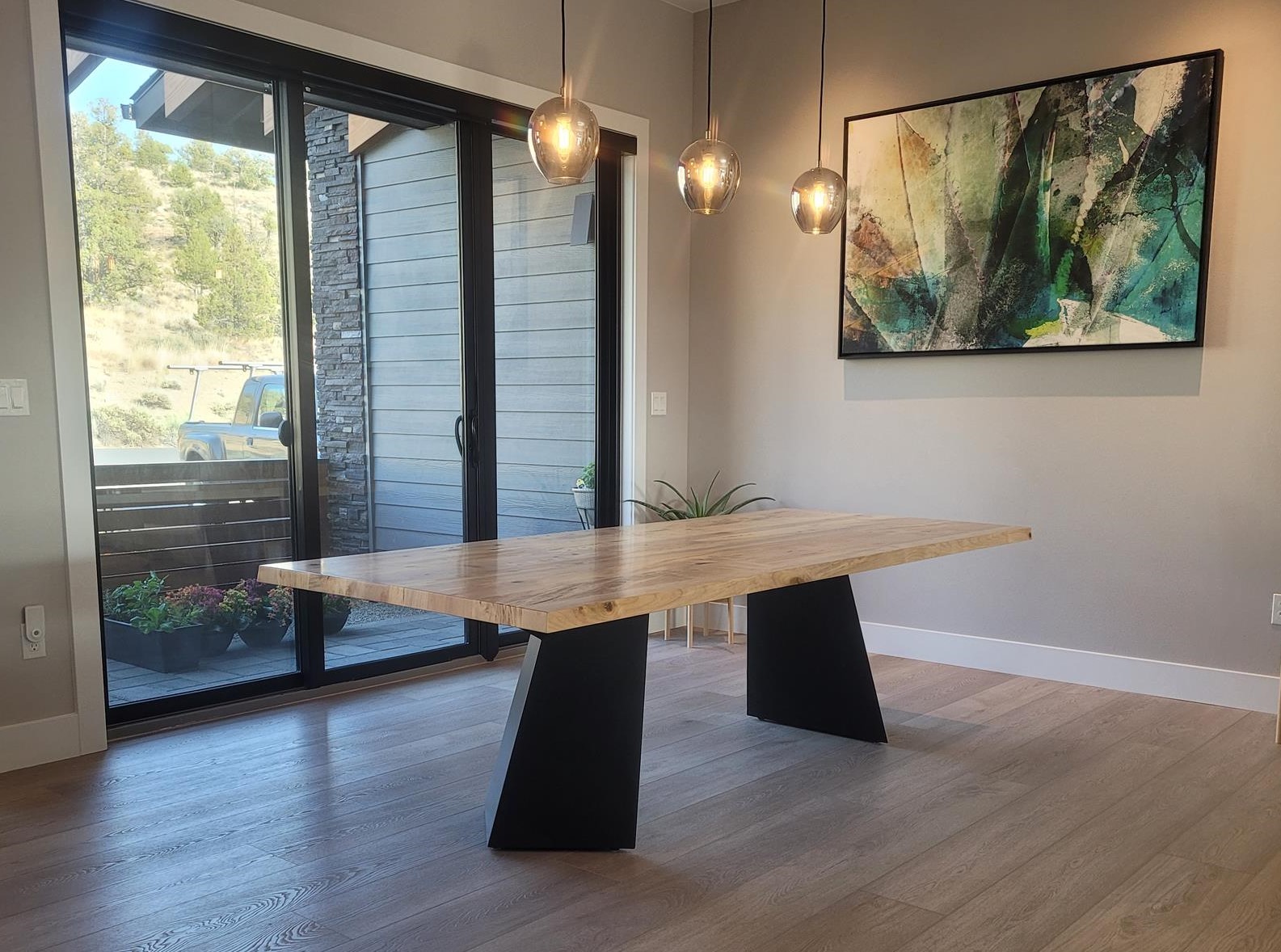Selecting the Perfect Table: What Styles Job Best for Your Home?
Choosing the optimal table for your home can be a nuanced procedure that stabilizes visual appeals and capability. Whether your area leans towards traditional elegance, modern minimalism, rustic charm, or commercial trendy, the variety of styles available can accommodate diverse preferences. Each design uses unique advantages and obstacles that can either improve or interrupt your dining location's consistency. Comprehending just how different materials, forms, and dimensions connect with your existing design is important. To browse these selections successfully and find a table that really enhances your home, consider the complying with facets thoroughly.
Assessing Your Space
Reviewing the measurements and layout of your dining area is an important primary step in choosing the perfect table. Begin by determining the length and width of the space, representing doorways, windows, and other building attributes that can affect table positioning. This makes sure that your table not just fits but also enables comfortable activity around it.
Take into consideration the variety of individuals you generally captivate. A table ought to accommodate your home's daily needs while offering sufficient flexibility for periodic visitors. As a rule of thumb, designate a minimum of 24 inches of table width each to make sure a comfy dining experience.
It's also crucial to maintain proper clearance around the table. Preferably, there need to go to least 36 inches between the table edge and walls or other furnishings, allowing very easy gain access to and movement. For areas where chairs with arms or added storage space systems like buffets are involved, raising this clearance to 48 inches is recommended.
Illumination and environment play considerable duties as well. Make certain that your table lines up with existing lighting components or plan for adequate lights options. This extensive spatial analysis guarantees that your table not only fits literally but additionally integrates with your space's overall performance and aesthetic.
Popular Table Styles

Conventional eating tables commonly include luxuriant information, bent legs, and abundant timber surfaces, evoking a feeling of ageless beauty. They are best for homes with timeless decoration or those seeking to add a touch of elegance to their eating location.
Modern eating tables focus on simpleness and clean lines, often incorporating products like glass and metal. These tables are perfect for contemporary areas, providing a streamlined and uncluttered appearance that matches minimalist design ideologies.
Rustic table, on the other hand, highlight natural products and a handmade look - dining room table legs. They usually include redeemed timber and a troubled surface, producing a warm and inviting environment. These tables function well in farmhouse-style homes or those seeking a relaxing, organic feeling
Industrial eating tables integrate resources such as steel and wood, usually showcasing a practical aesthetic. This design is well-suited for loft spaces or urban spaces, including a touch of tough appeal and sturdiness to the dining experience.
Each design provides distinctive benefits, making it important to pick one that aligns with your home's general layout and your individual preferences.
Product Choices
When choosing an eating table, the option of product plays a vital role in figuring out both the table's aesthetic appeals and capability. Wood, metal, glass, and composite products each offer special advantages and obstacles, making it vital to straighten the material with your home's style and lifestyle demands.
Wood is an ageless and functional option, available in selections such as oak, walnut, and mahogany. Recognized for its durability and warmth, timber enhances both traditional and contemporary interiors. It needs routine upkeep to protect against scrapes and bending.
Steel tables, typically crafted from stainless-steel, light weight aluminum, or functioned iron, are commended for their modern appeal and robustness. They are particularly fit for industrial or minimalist settings but can be prone to dents and may feel cold to the touch.
Glass dining tables bring an air of elegance and openness, ideal for smaller areas as they produce an illusion of more room. While simple to clean, glass can be vulnerable to smudges and needs careful taking care of to stay clear of chips and fractures.
Composite materials, such as MDF and plywood, offer economical and adjustable services, though they may lack the longevity of natural products. Picking the ideal product guarantees your table is both a practical asset and an aesthetic joy.
Sizes And Shape Considerations
After identifying the suitable product for your eating table, the next consideration is picking the ideal form and size to suit your room. The form of the table substantially influences the room's aesthetic and functionality. Rectangle-shaped tables, the most common form, are optimal for larger rooms and can fit a higher number of guests. They also enable a much more official dining experience. On the other hand, rounded tables promote a sense of affection and are exceptional for smaller dining locations, encouraging discussion by eliminating edges and making everyone really feel equally included.
Dimension is just as essential and need to be dictated by both the space's measurements and the number of individuals you plan to seat consistently. Generally of thumb, designate at the very least 24 inches of table width per individual to make certain comfortable eating. Additionally, consider the table's clearance area: there need to be at least 36 inches in between the table side and the wall surfaces or other furniture. This makes sure that restaurants can move around quickly without really feeling cramped. you could try this out Extending tables offer versatility if you regularly host bigger celebrations, supplying added seating when required without inhabiting extra room daily. Selecting the right sizes and shape makes sure both usefulness and aesthetic consistency in your dining location.
Matching Your Style
Selecting an eating table that integrates with your existing decor is pivotal in producing a cohesive and welcoming space. A smooth, minimal table with clean lines is excellent for a modern home, while a vintage, elaborate table fits a more traditional setup.
Shade and material are equally substantial. If your design features warm tones and all-natural materials, think about a wooden table to improve the natural feeling. On the other hand, a glass or metal table may be better in an area controlled by cool colors and commercial components. Take note of the surface, as it must mirror various other furnishings and components to maintain harmony.
A rough-hewn, reclaimed wood table can add character to a rustic space, while a refined marble surface can elevate an elegant eating location. A well-matched dining table not only enhances aesthetic charm but also enriches the total eating experience.

Verdict
Choosing the suitable eating table requires cautious consideration of area, style, materials, shape, and dimension. Standard tables enhance timeless insides with abundant wood finishes, while modern tables i loved this suit modern discover this setups with glass and metal.